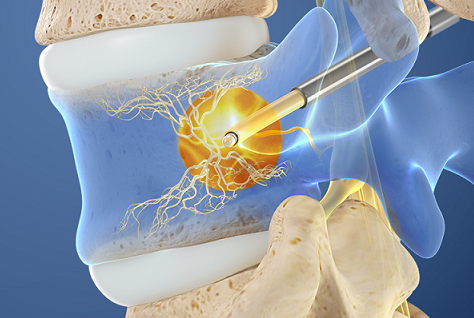Steamboat Spine - Spinal Motion Preservation Center
The spine is not a rigid structure. By design, it is intended to move and spinal motion preservation is always our focus at Steamboat Spine. With a philosophy to first provide the least invasive treatment that allows patients to return to their favorite activities, the SOSI Spine team incorporates conservative, non-surgical treatment options as the initial course of action. If surgery is necessary, Dr. Sielatycki has extensive training and experience using the latest spine surgery techniques including minimally invasive, and motion-preserving devices such as cervical disc replacement and lumbar total joint replacement. Our goal is to not only preserve motion but, in many cases, restore motion in the spine.

Emphasis on Non-Surgical, Conservative Care
Only about 10 percent of patients seen for spine complaints will benefit from surgery, which is why it’s important to have an extensive screening process with a multidisciplinary approach to pain and function.
We live in a very healthy and active community and most people want to avoid surgery if possible. There are cases when it becomes obvious that the patient needs more immediate surgery, and in these cases, there is no delay in getting the patient a surgical evaluation. We want to improve people’s function and motion and avoid surgery unless we can predict an excellent outcome.
Jessica Nyquist and Michael McDermid often see patients initially for accurate diagnosis and conservative treatment options, essentially working as the triage experts for the overall spine program. They provides a full neurological and musculoskeletal examination as well as appropriate imaging such as MRI, which is now available on site at SOSI’s new clinic. Michael and Jessica may provide physical therapy or exercise prescriptions, refer to Dr. Siegel for spinal needle interventions or medication management.
Spine Surgery with a Focus on Spinal Motion Preservation
There are certain spine conditions which may ultimately require surgery, either in the setting of failed conservative treatment or when there is a severe or progressive neurological deficit. Dr. Sielatycki has made spinal motion preservation the focus of his surgical practice, and regards spinal fusion procedures as a last resort when there truly are no other options.
“The spinal motion segments in both the neck and low back are designed to move just like any other joint in the body. We now have an even better understanding of the importance of maintaining motion between the lower lumbar spine, pelvis, and hip joints, as these are the core of the body’s ability to move fluidly – not just in athletic activities like running, skiing, and biking, but in day to day living with standing, sitting, twisting and bending,” says Dr. Sielatycki. “These motion segments of the spine are among the last joints in the body still being fused by many surgeons around the world. My goal with each patient is to find the best surgical option and avoid fusion if at all possible. It is true that there are certain conditions which still will do best with a fusion operation, but this is not the default answer for me.”
Consultations
If you have been told you need a spinal fusion operation, and you are experiencing back pain, our team at the SOSI Spine Motion Center would be honored to provide a full evaluation of your condition. First and foremost, consideration will be given to whether any surgery is needed at all, as many times there are excellent non-surgical options to keep your spine moving. If indeed surgery is the best option, Dr. Sielatycki will offer a thorough assessment of your history, symptoms, and imaging findings to determine what the best motion-preserving surgical option would be for you: whether that be through disc / spinal joint replacement or just a simple nerve decompression without the need for device implantation.
The Steamboat Orthopaedic & Spine Institute comprises a dedicated, local, and highly-trained staff of ten physicians and dozens of medical care and support staff, bringing world-class medicine to northwest Colorado, southern Wyoming, and the surrounding region. Alongside the team of specialists, SOSI also has a physical medicine and rehabilitation specialist and a physiatrist who specializes in the evaluation of spinal and musculoskeletal disorders, non-operative spine care, including epidural injections, and EMG and global orthopaedic assessments.
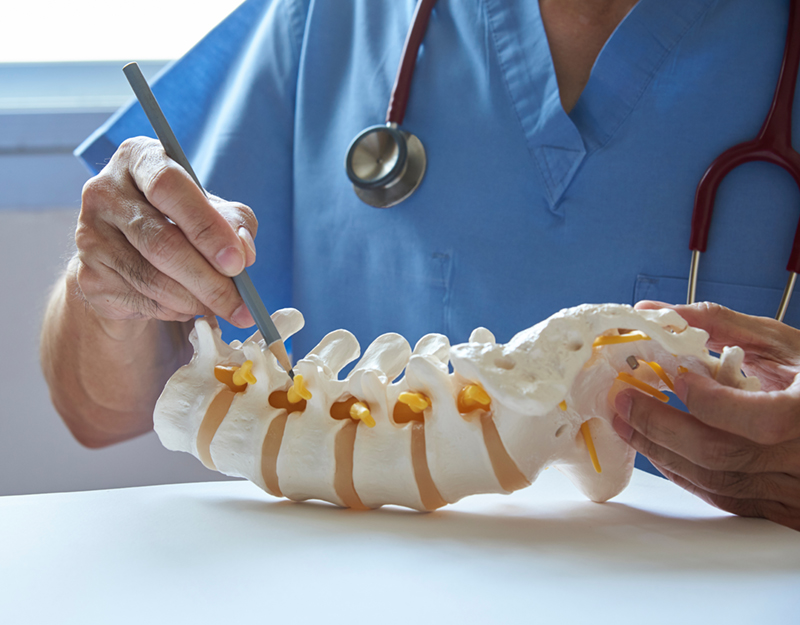
Cervical Disc Replacement
Cervical Spinal disc replacements are increasingly becoming a preferred way to preserve spine motion and an alternative to fusion procedures which may lead to more rapid degeneration adjacent to the fusion, loss of flexibility and the need for possible future surgeries. Approved by the FDA in 2007, cervical disc replacements are now common, and Dr. J. Alex Sielatycki has extensive experience in cervical disc replacement and has performed over 1,000 cervical disc replacements.
“The spine is not a rigid structure; it is designed to move. Every time you move – sit, stand, bend, twist – it’s part of a kinetic chain that includes everything from the ground up, from your feet through your legs to your hips and pelvis to the spine.” - Dr. J. Alex Sielatycki
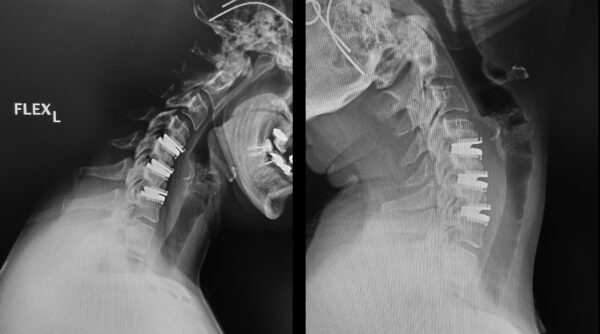
Advancements in Lumbar Spine Total Joint Replacements
Dr. J. Alex Sielatycki is currently involved in the clinical trial and FDA approval process of a new total joint replacement surgery of the lumbar spine segment using the breakthrough Balanced Back MOTUS lumbar device, developed by 3Spine, as is an alternative to spinal fusion surgery. By maintaining or restoring motion of the lumbar discs it will relieve pain and minimize collateral damage to adjacent spine segments. The new 3Spine device is now moving toward FDA approval which should be complete within the next two years,
Although disc replacements are common in the upper or cervical spine, due to the complex anatomy and the difficulty in working around nerves, joint replacements are not yet as common in the lower or lumbar spine. These motion segments of the spine are among the last joints in the body still being fused by many surgeons around the world.
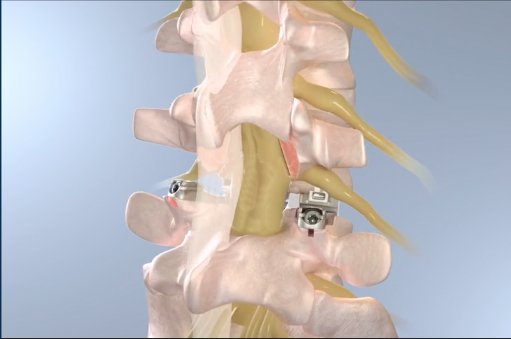
“We now have a better understanding of the importance of maintaining motion between the lower lumbar spine, pelvis, and hip joints, as these are the core of the body’s ability to move fluidly – not just in athletic activities like running, skiing, and biking, but in day to day living with standing, sitting, twisting and bending.
We have known for decades that lumbar spinal fusion surgery can have substantial negative downstream effects on spinal motion and overall spinal health, but truly effective alternatives to fusion have been elusive. With this lumbar total joint replacement technology, I believe we have an answer to this decades-long problem which has plagued so many patients,” - Dr. J. Alex Sielatycki
Fusion Conversion to Disc Replacement
Dr. J. Alex Sielatycki has successfully converted numerous fused discs back to a mobile disc replacement; allowing patients with fused vertebrae to experience the freedom of spinal motion once again. In (year) having personally performed hundreds of fusions and even more cervical disc replacements in his career, Dr. Sielatycki began to understand how a reverse fusion could become a reality. Collaborating and consulting with his peers to perfect the technique, he has now successfully reversed more than 20 cervical disc fusions. If you feel you are a candidate for this remarkable reversal surgery, please call for a consultation.
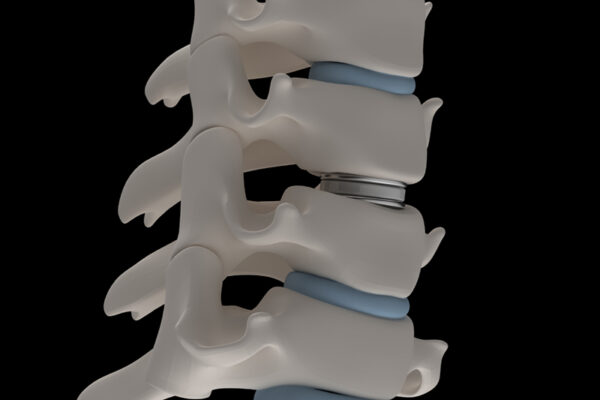
TOPS Spinal Implant
The TOPS spinal implant, developed by Premia Spine, offers an alternative solution to spinal fusion surgery for patients with moderate to severe lumbar spinal stenosis, degenerative spondylolisthesis and related spinal conditions impacting the spinal facet joints, while maintaining stability and preserving motion. In a Posterior Arthroplasty procedure, the surgeon removes the bony elements that press on the nerves and replaces them by implanting the TOPS System to stabilize and reestablish a controlled range of movement of the lumbar spine.
TOPS surgery is an option for otherwise healthy, active people with chronic low back pain, sciatic pain, numbness, tingling, burning sensation, and/or radiating leg pain while walking (spinal claudication), allowing them to regain the ability to bend, flex, walk, and enjoy the normal activities of life that were so debilitating before surgery.
The TOPS spinal implant was approved by the FDA in June 2023 and Dr. J. Alex Sielatyski received his training for the procedure in September 2023.
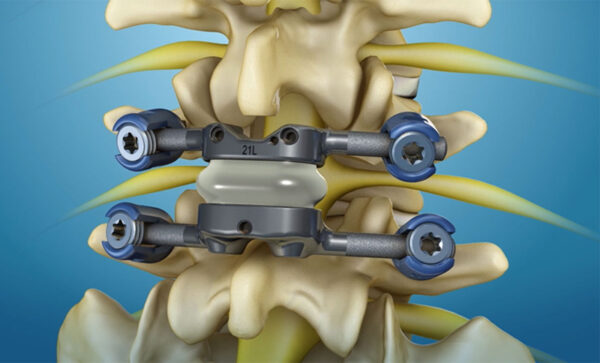
Disc Replacement
Spinal disc replacements are increasingly becoming a preferred way to preserve spine motion and an alternative to fusion procedures which may lead to more rapid degeneration adjacent to the fusion, loss of flexibility and the need for possible future surgeries. Approved by the FDA in 2007, cervical disc replacements are now common, and Dr. J. Alex Sielatycki has performed over 400 of these procedures. SOSI is currently involved in trials toward FDA approval of more complicated lumbar disc replacements.
“The spine is not a rigid structure, by design, it is intended to move. Every time you move – sit, stand, bend, twist – it’s part of a kinetic chain that includes everything from the ground up, from your feet through your legs to your hips and pelvis to the spine.” - Dr. J. Alex Sielatycki

Dr. J. Alex Sielatycki, brings his strong interest and expertise in spine motion preservation to SOSI. The use of disc replacements throughout the spine provides an alternative to spinal disc fusion procedures, which may lead to more rapid degeneration adjacent to the fusion, loss of flexibility and the need for future surgeries.
Although disc replacements are common in the upper or cervical spine, due to the complex anatomy and the difficulty in working around nerves, joint replacements are not yet as common in the lower spine.
Currently Dr. Sielatycki, SOSI and the Steamboat Surgery Center are involved in a clinical trial performing the new Balanced Back Total Joint Replacement surgery of the lumbar spine segment using the breakthrough 3Spine MOTUS lumbar device, as is an alternative to spinal fusion surgery. This clinical series is moving the new device toward FDA approval. By maintaining or restoring motion of the lumbar discs, pain is relieved and collateral damage to adjacent segments is minimized.
“We have known for decades that lumbar spinal fusion surgery can have substantial negative downstream effects on spinal motion and overall spinal health, but truly effective alternatives to fusion have been elusive. With this lumbar total joint replacement technology, I believe we have an answer to this decades-long problem which has plagued so many patients.“ - Dr. J. Alex Sielatycki
Dr. Sielatycki is currently enrolling patients in the FDA clinical trial for the 3Spine BalancedBack Total Lumbar Joint Replacement, as well as into the standard of care “control” arm of the study.
Intracept Procedure
The Intracept® Procedure, developed by Relievant Medsystems, is a minimally invasive, outpatient procedure for patients with chronic lower back pain originating inside the vertebrae. The procedure targets the basivertebral nerve within the vertebra and has been shown to improve function and relieve pain long-term in patients who have not responded to more conservative treatments.
Using image guidance, the curved hollow Intercept® Introducer is positioned by the surgeon to create a channel to the trunk of the basivertebral nerve. Then the Intracept® probe is inserted into the channel to deliver radiofrequency energy which ablates the nerve.
The procedure is implant-free and preserves future treatment options for other spine conditions.
